#bad zoology
Text
Once the birds had learned how to initiate video interactions, the second phase of the experiment could begin. In this “open call” period, the 15 participating birds could make calls freely; they also got to choose which bird to dial up. Over the next two months, pet parrots made 147 deliberate video calls to other birds. Their owners took detailed notes about the calls and recorded more than 1,000 hours of video footage that the researchers analyzed.
45K notes
·
View notes
Text
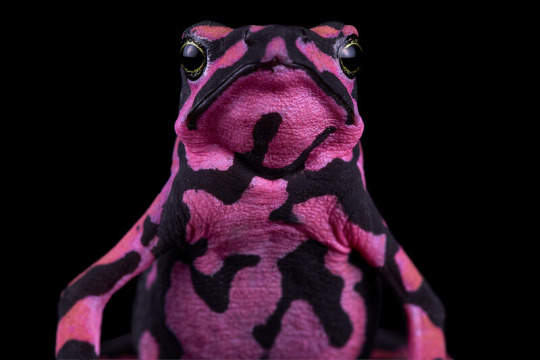
Bad Newts: Amphibians are in Serious Trouble
My colleagues and I have just had a paper published in Nature, based on our efforts to assess almost all amphibian species for the IUCN Red Lists. The major takeaway messages:
It is a bad time to be an amphibian
Two fifths of all amphibians are threatened with extinction.
Salamanders are the most threatened group; three fifths of all salamanders are threatened with extinction!
Climate change is a major driver of amphibian declines globally
Habitat loss, especially due to agriculture, is a problem for the vast majority of amphibians
Chytrid pandemics have caused and continue to cause catastrophic declines of both salamanders and frogs
Protected areas and careful management are working as strategies! They are actively improving the outlook of some species
As many as 222 amphibian species may have gone extinct in recent times; of those, 185 are suspected extinct but not yet confirmed.
Our paper is Open Access, you can read it here!
Photo of Atelopus hoogmoedi by Jaime Culebras, used with permission
#frogs#science#news#biology#zoology#newts#salamanders#amphibians#Nature#it's all over me#conservation#bad news bears#animals#this is my first Nature paper#sure I am just one of >100 authors#but I am still very excited#can you tell?#I wish I could write more about this#but I am in a grant crunch so no time#and also I have to run off to play d&d in like ten minutes#so here we are
3K notes
·
View notes
Text
Actual incidents at the old Washintgon Park Zoo in Milwaukee that seem almost out of the playbook of Zookeepers Lionel Botch and Eustis Peevly (as per Help! ... It's The Hair Bear Bunch!) ... but then again, could you just imagine a "wrasslin' match" between Breezly Bruin (himself a polar bear) and Square Bear (obviously the most guillable of the Wonderland Zoo's madcap ursine trio)?
#hanna barbera#hair bear bunch#breezly bruin#weird news#misguided#bad zoology#washington park zoo#milwaukee#unbelievable#bear fights#illogical#defying logic#hannabarberaforever
0 notes
Text
Daily fish fact #699
European conger!

It is the heaviest eel in the world at a maximum weight of 110 kilograms (243 lbs). These nocturnal predators occasionally like to hide in the same holes with moray eels.
#one source said these bad boys can be even heavier at 160 kg but im sticking to the comfortable 110 kg#it is what fishbase said#fish#fish facts#fishfact#fishblr#biology#zoology#marine biology#marine life#marine animals#sea animals#sea life#sea creatures#eel#eels#conger eel#european conger#european conger eel
90 notes
·
View notes
Text
Taxonomy Tournament: Mammals


Caniformia. This suborder of Carnivora contains dogs, foxes, bears, otters, badgers, raccoons, skunks, seals, and walruses.
Perissodactyla. This order is also known as the odd-toed ungulates because they (mostly) have hooves and bear weight on one or three toes. It is made up of equines, rhinos, and tapirs.
#pitting two bad bitches against each other#or; bad bitches against bad mares#animals#biology#polls#zoology#dogs#foxes#bears#raccoons#skunks#seals#mammals#tetrapods#horses#donkeys#rhinos#Caniformia#Perissodactyla#0x1fv0x60
62 notes
·
View notes
Text
I literally hit 300 followers while writing this so here you go: Here is a study I've done on the various sapient species of Splatoon! Drawing them all in their entirety would take too much time, so I've stuck to just some hands. besides, it looks cool.
Quick note: Keep in mind that the art i’ve done for each group is a generalisation, there is an ABSURD amount of variation between different species so if you want to use this knowledge for your own stuff then literally go nuts! There are basically no rules!
Anyway, This is a very long and nerdy post, so strap in.

First we have the Cephalopods. This includes Inklings, Octolings and Nautili. (I made seperate sciencey-art posts for each a while ago). These guys are cold-blooded, have no bones, blue blood and suckers on the end of each finger (except nautili, cause they’re weird.) These suckers are quite strong especially in Octolings, which can use them to cling to walls and even ceilings. Squid also have sucker-teeth, these retractable, chitinous rings inside each sucker that vary in length and sharpness between species.
Inkfish (excluding nautili) have 3 main types of skin cells;
Chromatophores, which allows for colour-changing
Iridophores/Leucophores, which gives the skin an iridescent effect
Photophores (some squid only) which can produce a blue glow.
Instead of bones, they have a unique system of muscles called a hydrostatic skeleton, which uses fluid pressure (in this case, ink) as a support structure. Blood is used too, but mostly ink cause they have so much of it (once again except Nautili, as they have no ink at all). This means that these guys are super bendy, they can stretch and contract their limbs and even turn their heads nearly 270 degrees!
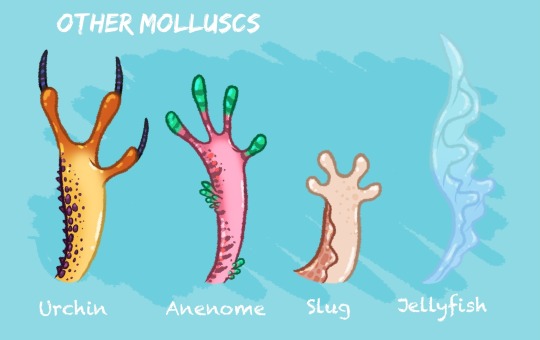
Next we have both Cnidarians and Echinoderms. (I've excluded crustaceans cause idk how to draw them lmao sorry). These groups include jellyfish, anemones, sea slugs, snails and urchins.
Similarly to cephalopods, they’re all also cold-blooded and lack bones, instead having similar hydrostatic system for support with varying strength between each class. For example, Anenomes have super robust supports in their legs thanks to calcified rods in the fluid cavity, however jellyfish are extremely floppy as they have extremely weak hydrostatic muscles.
On a side note, Jellyfish and Anenome are also unique, as many species have cnidocytes in their various arms and tentacles. These are cells that when stressed, will inject a venom that varies in strength from a bee-sting to literally killing you.
Urchins are similar, as each finger is tipped with a brittle spine that can not only inject a weak venom but also break off into your skin, leaving behind nasty shards that cut you up from the inside. Fun.
And then there’s Sea Slugs/Snails which are literally the sweetest little people alive, they have no natural weapons at all apart from their poisonous flesh. They don’t even have teeth at all! They’re just slimy little buddies who love you!
However, urchins are immune to their poison as they eat them. Sea Slugs are actually an urchin’s ONLY source of food (they get sick/weak eating anything else), and this has resulted in quite a lot of legal and criminal issues. It’s whole other can of worms.

And finally, fish. Fish are actually the ONLY people in the entire Mollusc Era to have proper bones and red blood, literally everyone else has either an exoskeleton or a hydrostatic system, with either blue blood or none at all. Damn fish and their weird joints.
Cartilaginous fish (sharks, manta rays) have cool, rough skin that’s kinda unpleasant to touch, whereas the most of the remaining species fall under the ray-finned fish (basically everything else) category, and they are covered in shiny scales.
Also eel, there is no hand. Because eel. I’m very funny.
And with that, I have concluded. I’ve done a lot of research on this stuff so if you have any questions at all or if you want me to draw some more diagrams/related artwork, please don’t hesitate to shoot me an ask!
I love talking about/drawing this stuff so it’s of no inconvenience!
#I tried typing this up on my laptop but it died so i’ve switched to a laggy wireless keyboard (help me it sucks so bad)#my art#splatoon#splatoon 3#splatoon art#speculative biology#speculative zoology#speculative evolution#spec bio#spec evo#spec zoo#fish#squid#Octopus#urchin#xeno octoling#Xeno tag#xeno inkling#xeno inkfish#inkling#octoling#splatoon headcanon#splatoon fanart#splatoon jellyfish
253 notes
·
View notes
Text
Bad taxidermy my beloved ❤️
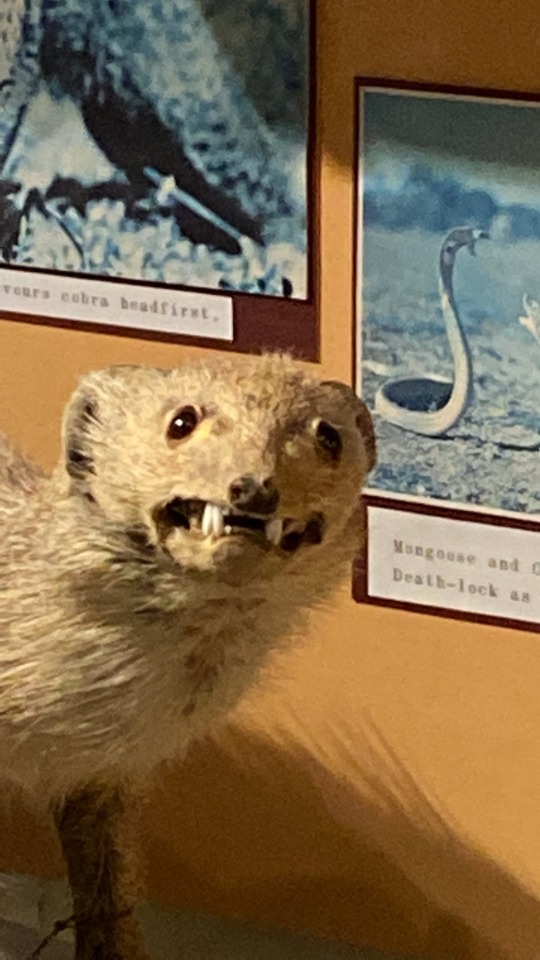
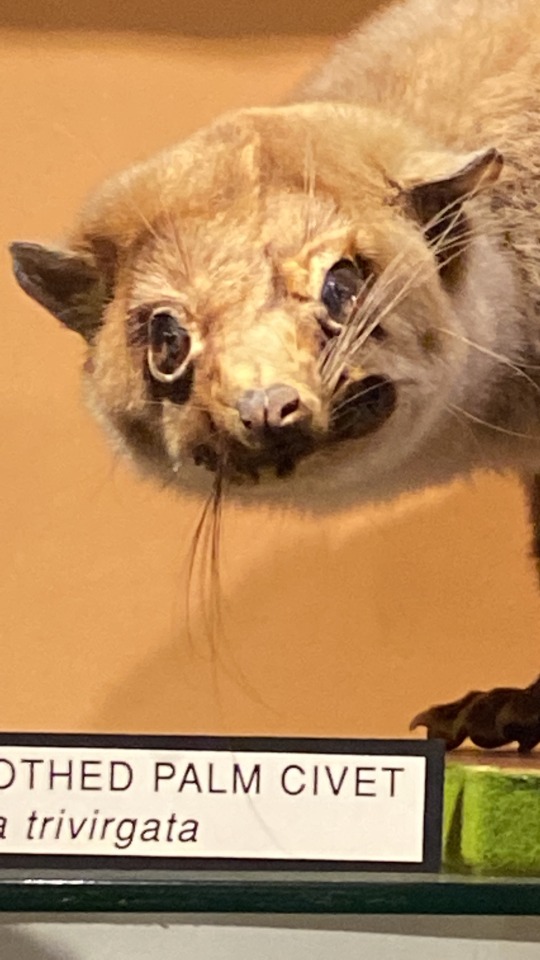

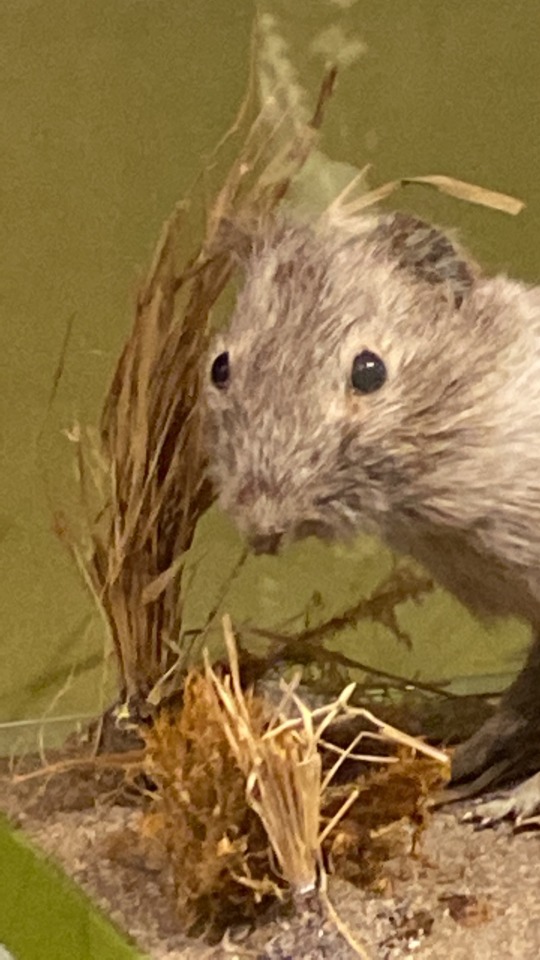
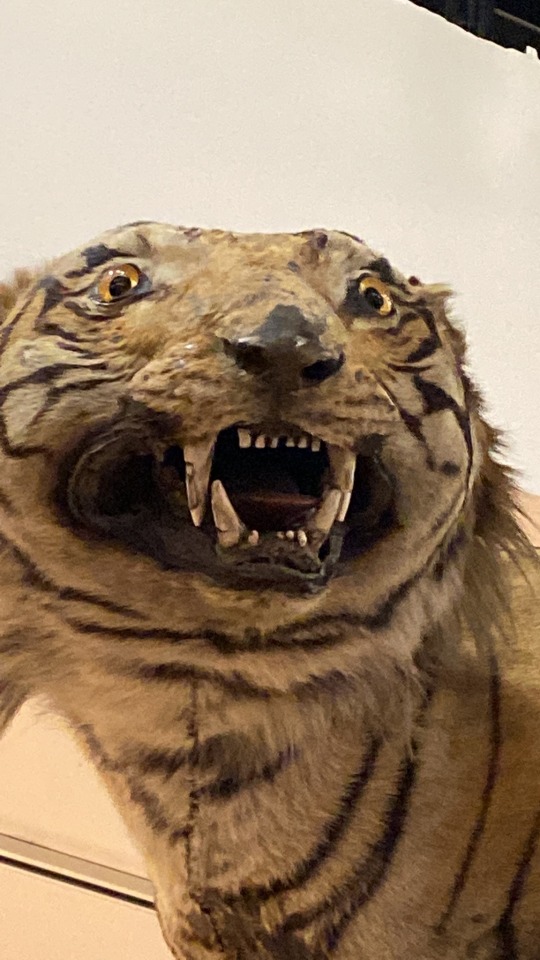


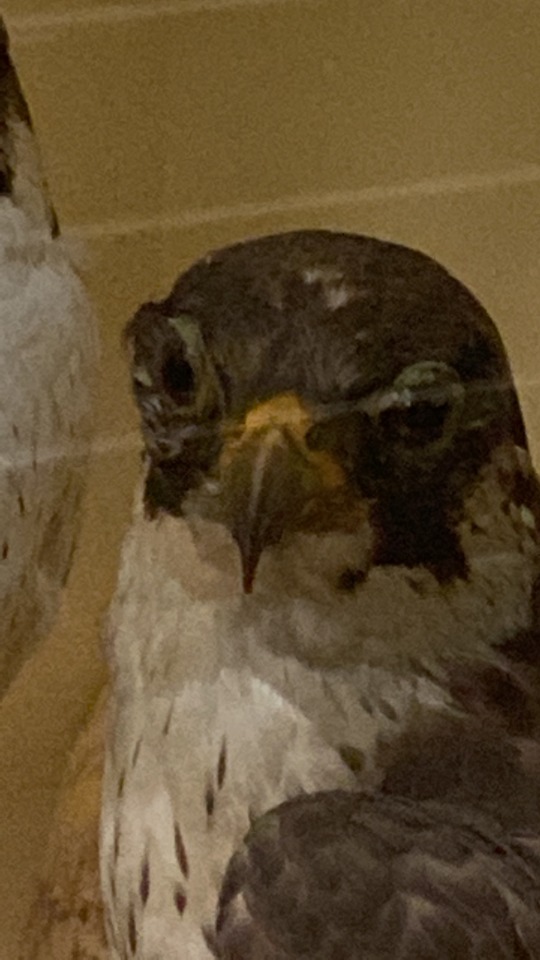
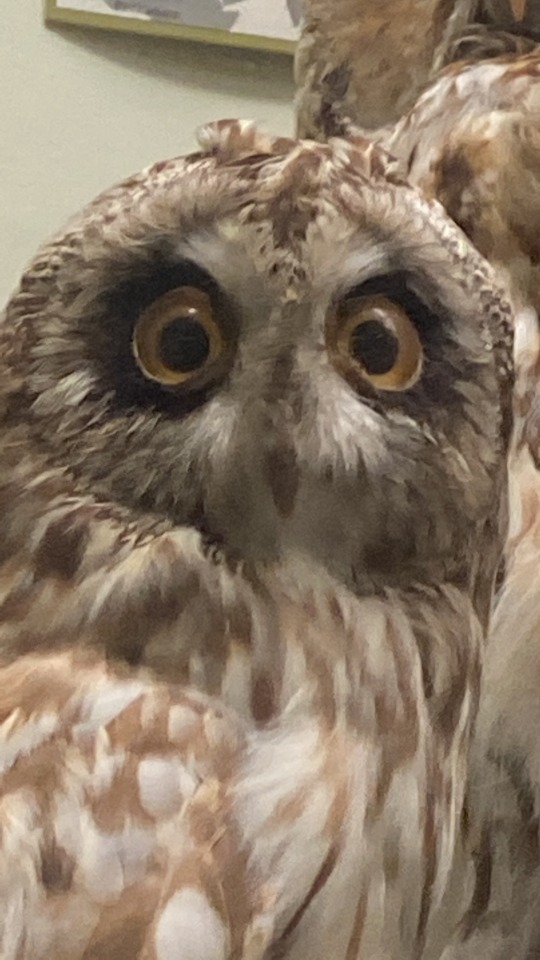
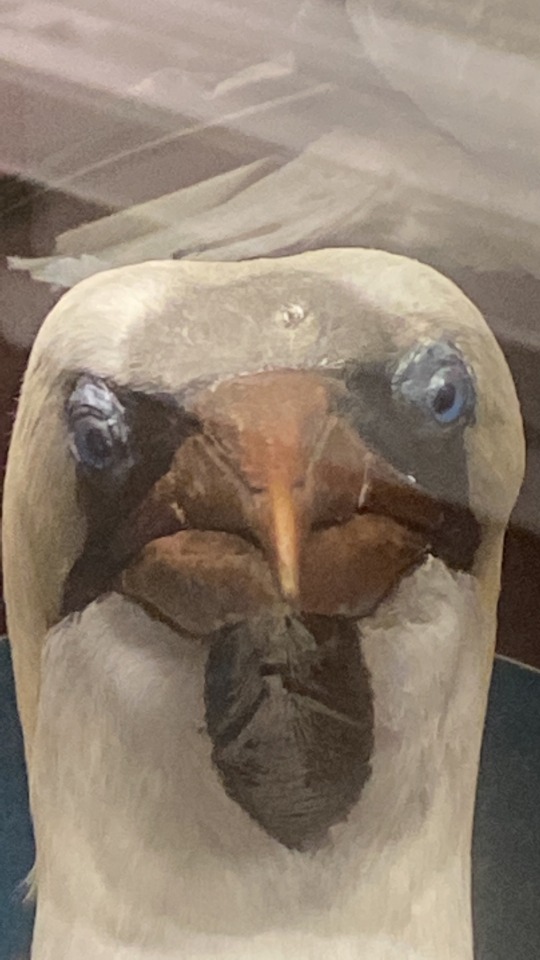
24 notes
·
View notes
Text
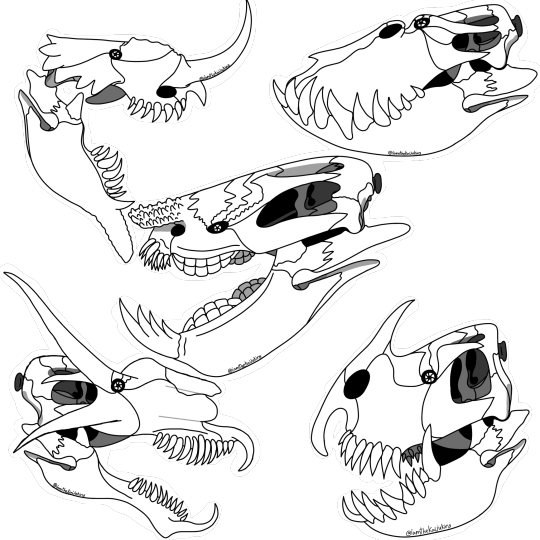


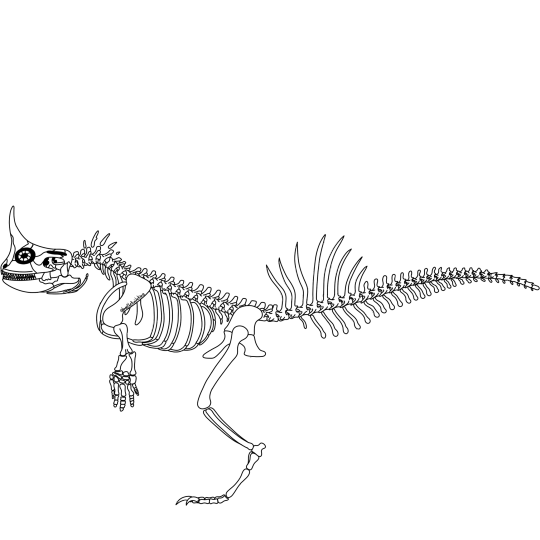
After completing the god children I took a short break before making the poster to have some bone fun.
Sawyer Lee made some skulls and turns out a lot of advanced dragons have open mandible fenestra, and I originally drew some skulls last year using tuatara anatomy but it turns out his dragons are equally related to squamates and Rhynchocephalia. So they all needed a touch up. I also did some arm bone anatomy, as his dragons also have 7 fingers, which I interpreted as a pinky that was duplicated twice. I also learned that most tetrapod hands don’t have the same amount of phalanges in their fingers as we do. While we have 2 phalanges for our thumbs and three in every other finger, amniotes started with a 2-3-4-4-5 arrangement.
Going from top left to right bottom in the top left picture: A Kinsbane, Mireworm, Clatterjaw, Scarlet Lasher, and Thundermaw
Second picture: Holdtaker, Shearwinter, Vilebrew, Kelpmonger, and Wroughtbelch
From top to bottom for the wings: Scarlet Lasher, Holdtaker, Kinsbane, and Spectacled dreadeye
The skeleton is of the most primitive dragon we’ve seen, the little guy sitting at the bottom of the cladograms we’ve been shown.
#speculative evolution#speculative anatomy#speculative biology#speculative zoology#skulls#skeletons#skeleton#anatomy#dragonslayer codex#bad fanart incoming#bones#art
20 notes
·
View notes
Text
This may be awful advice but
Do things for dumb vain reasons if it's what it takes for you to do them. Revise to do better than people you can't stand. Eat well so that you'll have better skin. Exist for the aesthetic of it if that's what it takes to find some joy. Be spiteful, be vain, ignore the world's problems if that is what you need to do to survive.
#studyblr#studying#zoology#studyspiration#dark academia aesthetic#dark academia#study tips#stemblr#vulture community#study self care#stem studyblr#stem academia#bad advice#my thoughts
22 notes
·
View notes
Text
Fun Fact: You can tell if a Monarch Butterfly is Male or Female at a Glance!
So, the other day, my dad showed me a picture of a monarch butterfly he saw, because my dad has a pure heart and gets excited about seeing butterflies. I looked at it for a second and said “Cool! That one’s a male!”
My dad looked at the picture, which was kind of blurry and didn’t really show much detail, then looked at me.
“How can you tell?”
“Easy,” I said, laughing, “The males are the ones with balls!”
This was mostly a joke, but also kind of true? Let me explain.
Here is a photo of two Monarch Butterflies (Danaus plexippus), one male, and the other female:

I can see right away that the male is the one at the bottom of the photo. How can I tell which is which? Well, All you have to do is look for these things:

See those little dots on the hindwing, circled in green? Those are only found in male monarch butterflies! Why?
Well, for the ladies, of course! Probably! Kind of! Maybe not?
Contrary to my joking answer to my dad, these are not the butterfly’s “balls” (which can be found elsewhere on the butterfly). Instead, these are called “alar pouches” (although they also have a bajillion other names, bc consistency is for chumps, I guess 😉).
They’re called “pouches” because, when viewed up close, they basically look like this:
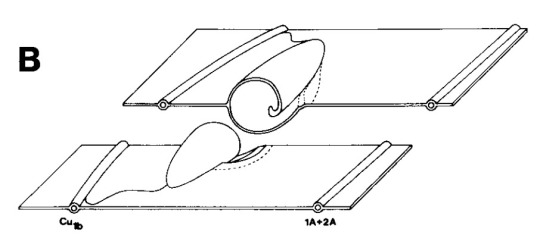
(these are technically a diagram of Danaus chryssipus alar pouches, but it’s similar enough to Monarchs so shhhhhhh)
These pouches contain a bunch of excretory cells, meaning that they produce various chemical compounds. Many people will confidently claim that these chemicals are “pheromones”, i.e., scents used to attract females, but the truth is... we don’t really know what monarchs use them for, if anything.

(also, there hasn’t been much recent research on this, recently. 😢)
The pheromone hypothesis makes sense, especially considering that other species in the same subfamily as monarchs, Danainae, definitely do use these sorts of pouches to excrete pheromones and attract a mate.
The problem is, in order to transfer a pheromone through the air and to the female, pheromone-transfer particles are required. Monarchs don’t seem to have any of these particles, nor the chemical pheromones themselves.
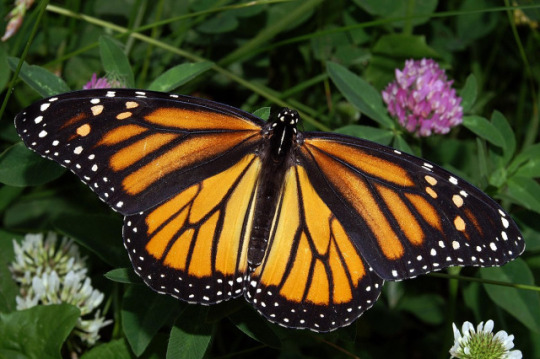
(female monarch, notably lacking alar pouches)
As it stands, it appears that the alar pouches on monarchs might be vestigial, meaning that they used to have a function for the monarch’s ancestors, but that its function has been lost over the course of evolution, leaving behind these little structures that don’t seem to be useful for much of anything.
At least, not useful unless you are a person who wants to tell the s3x of some monarch butterflies!
This has been Fun Fact Friday, teaching you how to s3x a butterfly for no particular reason other than I think it’s neat! (now on Monday, because I have discovered automated censorship, and it hurts)
(side note: my dad has been using this knowledge to educate many people against their will. Friends, family, and random strangers have all been victims of his relentless information campaign. He cannot be stopped, the absolute Mad Man.)
Sources: x, x, x, x
#biology#fun fact friday#entomology#bugs#butterflies#monarch butterfly#science#sciblr#science side of tumblr#zoology#STEM#adhd in STEM#fun fact#insects#insect physiology#i guess#i know that it's monday but the system decided that this post needed to be censored#which: rude#some of the links are google scholar citations. bc i'd feel bad linking the pdf directly >.>#mobile users would end up getting it downloaded automagically#which is of course horrible to have happen unexpectedly#ps my dad is great#i still have the depression#also butterflies don't experience gender the way that humans do#probably
138 notes
·
View notes
Text

A drawing and collection of sketches for one of my unnamed sophonts! Still need to make a species sheet for these guys
#art#spec evo#speculative evolution#spec bio#speculative biology#speculative zoology#alien#aliens#still bad at tagging things lol#sketch#sketches#slurpasour's art
35 notes
·
View notes
Text
#such a good song#i also think it's awesome that the singer is a professor#he has a phd from cornell#CORNELL!#it's in zoology#such a nerd#and i love him#bad religion
4 notes
·
View notes
Note
Is traditional Boidae (boas, pythons, Loxocemus, Casarea, etc.) monophyletic?
no, not at all. It's a shitshow.
Here is part of the phylogeny of squamates by Zheng & Wiens (2016).
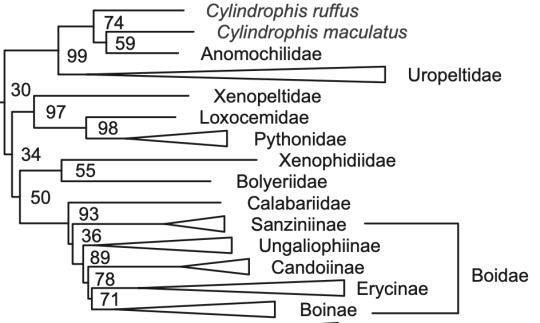
True pythons (Pythonidae) are sister to Loxocemidae (burrowing pythons), in turn sister to Xenopeltidae (sunbeam snakes)
On the other hand, Boidae in the broad sense (since very often treated as superfamily Booidea, with subfamilies treated as full families) is closest related to Calabariidae (Calabar 'python'). The relationships between Pythonidae+Loxocemidae+Xenopeltidae and Booidea+Calabariidae is not well resolved, and the Xenophidiidae and Bolyeriidae somehow get in the middle.
So, it is very likely that pythons and boas arrived at their morphological similarities rather independently. Which is especially impressive in lineages like Chondropython and Corallus, which are just unbelievably similar.
For other ramblings on a related topic, see this post about the lack of pythons in Madagascar
#snakes#animals#zoology#phylogeny#taxonomy#evolution#this ask is—and I shit you not—six years old#it is in kindergarten#it is about to start losing its baby teeth#it has a 2600 word expressive vocabulary#sorry anon#I am bad at things#anon#anonymous#answers by Mark
68 notes
·
View notes
Text
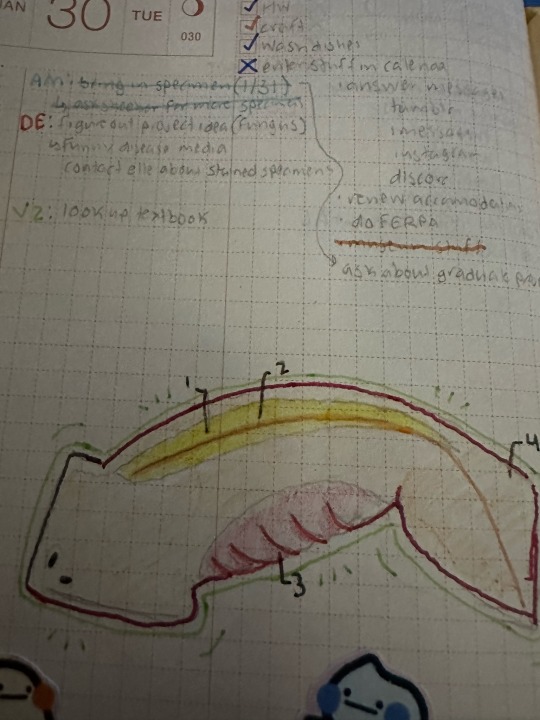
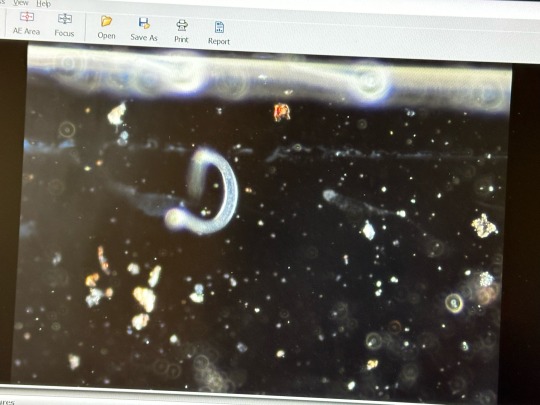
Drawing of an ancestral chordate in my day planner and a wriggling nematode in space (moss water with dark-field microscopy)
#Also found a tardigrade in the moss i collected#and a freshwater bryozoan covered in particles like a teeny caddisfly larva#taking vertebrate zoology and advanced microscopy this semester#It should be a nice last semester. i love microscopes and i already know a lot about vertebrates#pardon the bad photo of the nematode. it was moving so fast that the camera program couldnt photo it well#my creations
5 notes
·
View notes
Text
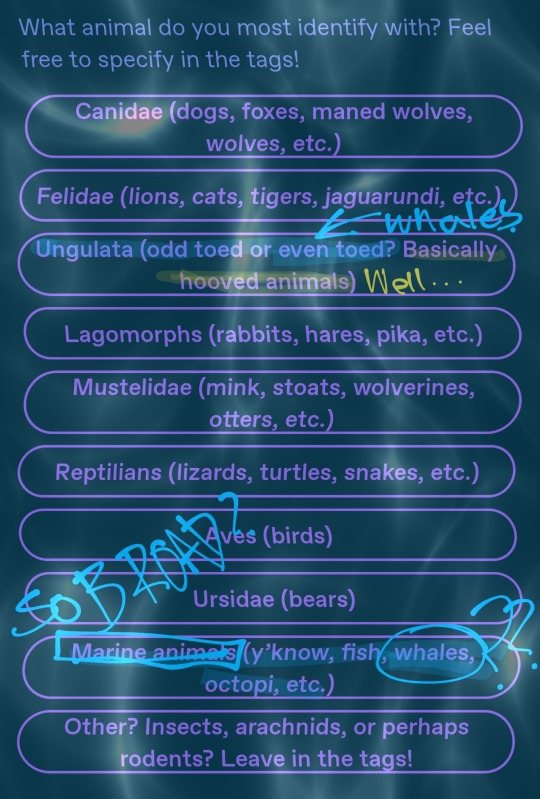
no hate to this post but um. your taxonomy made me frown confused
#NO HATE. taxonomy is hard im bad at it.#but um. these groupings are actually insane#also the other being so vague and touching on ANOTHER MAMMAL#WHEN LITERALLY EVERY SINGLE OPTION IS VERTEBRATES??????#guys why are we taught so much about vertebrate zoology andnnever invertebrates. 😐#if it was a fair world there'd be like 75% of the votes for Other
8 notes
·
View notes
Text
Taxonomy Tournament: Insects


Siphonaptera. This order is made up of fleas, small flightless insects that live as external parasites of mammals and birds, which feed on their blood.
Diptera. This order, known as the true flies, is made up of insects that fly using onle a single pair of wings. Members inclue fruit flies, houseflies, and mosquitos
#this one is kinda ''which clade is less bad''#animals#biology#polls#poll tournament#zoology#Animal parasite#fleas#arthropods#insects#ecdytes#flies#fruit flies#mosquitos#Siphonaptera#Diptera#0x1dv0xe2#animal tournament#Animal Tournament Round 1
44 notes
·
View notes